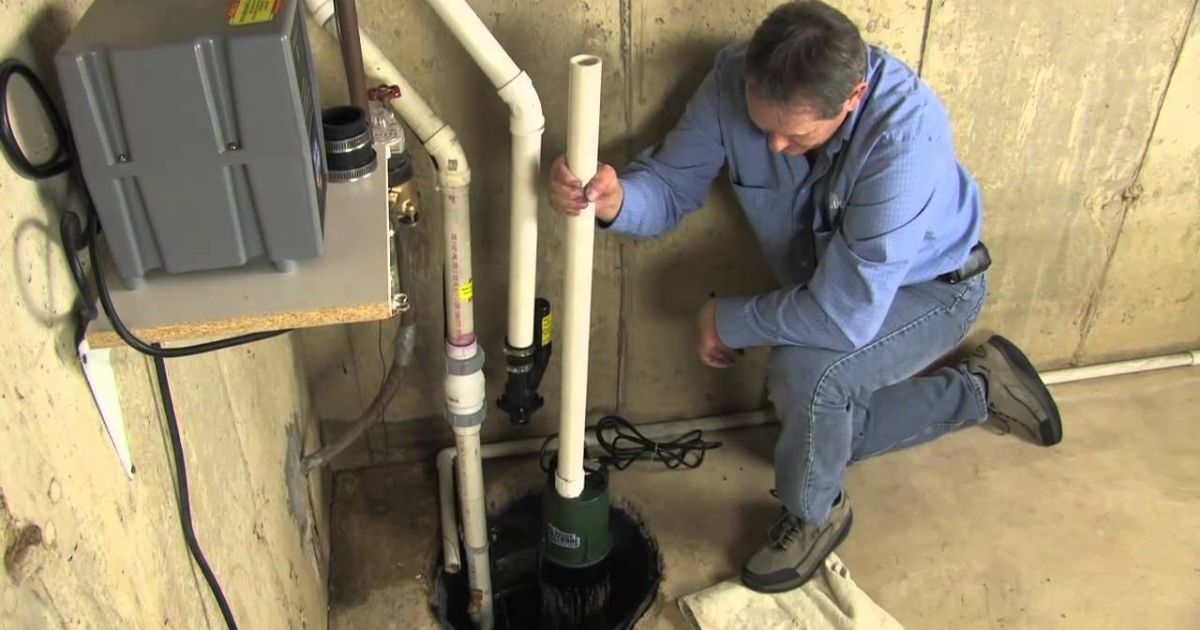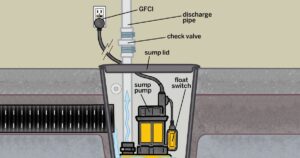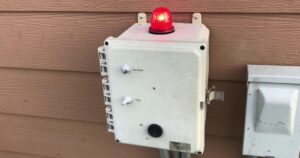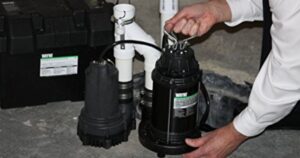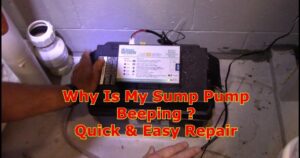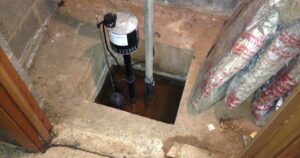Choosing the right horsepower (hp) sump pump can be as crucial as finding the perfect fit for a puzzle. With various factors to consider, such as water flow, capacity, and vertical lift, it can be overwhelming to determine the ideal sump pump for your needs. In this article, we will guide you through the process of selecting the appropriate hp sump pump, ensuring that you make an informed decision for a reliable and efficient solution to safeguard your property from potential water damage.
Key Takeaways
- The size of the sump pit, vertical distance of water pumping, volume of water to be pumped per hour, and additional features or requirements are factors to consider when choosing the horsepower of a sump pump.
- Properly sizing a sump pump is important to ensure efficient water removal, prevent flooding and water damage, and maintain a dry and safe environment.
- Submersible sump pump options include considerations such as horsepower, flow rate, head pressure, and type of switch mechanism.
- Some recommended sump pumps for different needs are the Zoeller M53 Mighty-Mate Submersible Sump Pump, Superior Pump 91250 Submersible Utility Pump, and Wayne CDU980E Submersible Sump Pump.
Factors for Choosing Sump Pump Horsepower
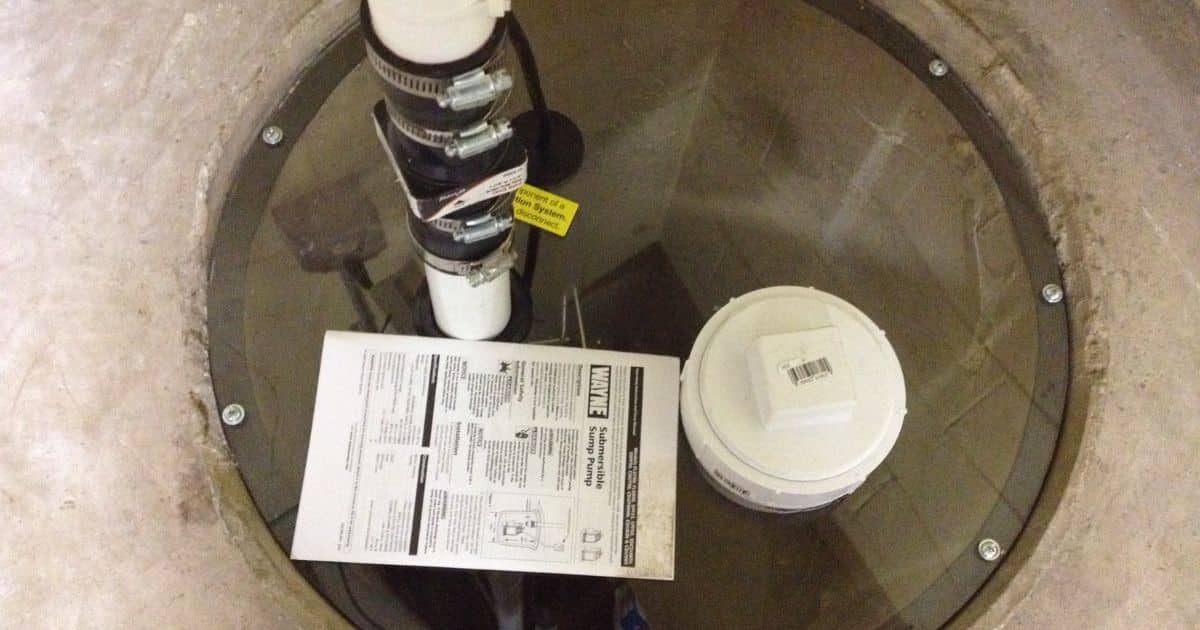
Additionally, the volume of water that needs to be pumped per hour is an important consideration. If you have a high water table or live in an area prone to heavy rainfall, a higher horsepower sump pump is recommended. Lastly, consider any additional features or requirements, such as battery backup or the need for a dual pump system. By carefully considering these factors, you can select the appropriate sump pump horsepower for your needs.
Importance of Properly Sizing Your Sump Pump
Properly sizing your sump pump is of utmost importance to ensure efficient water removal, as discussed in the previous subtopic, considering factors such as the size of the sump pit, vertical distance of water pumping, volume of water to be pumped per hour, and any additional features or requirements. By choosing the right size sump pump, you can prevent flooding, protect your property, and maintain a dry and safe environment.
If the sump pump is too small, it may not be able to handle the volume of water, causing it to work harder and potentially fail. On the other hand, if the sump pump is too large, it may cycle on and off too frequently, leading to premature wear and tear. Therefore, it is crucial to carefully assess the needs of your sump system and select a pump that matches those requirements.
Consulting with a professional or referring to manufacturer guidelines can help ensure you choose the correct size sump pump for your specific needs.
Understanding Submersible Sump Pump Options
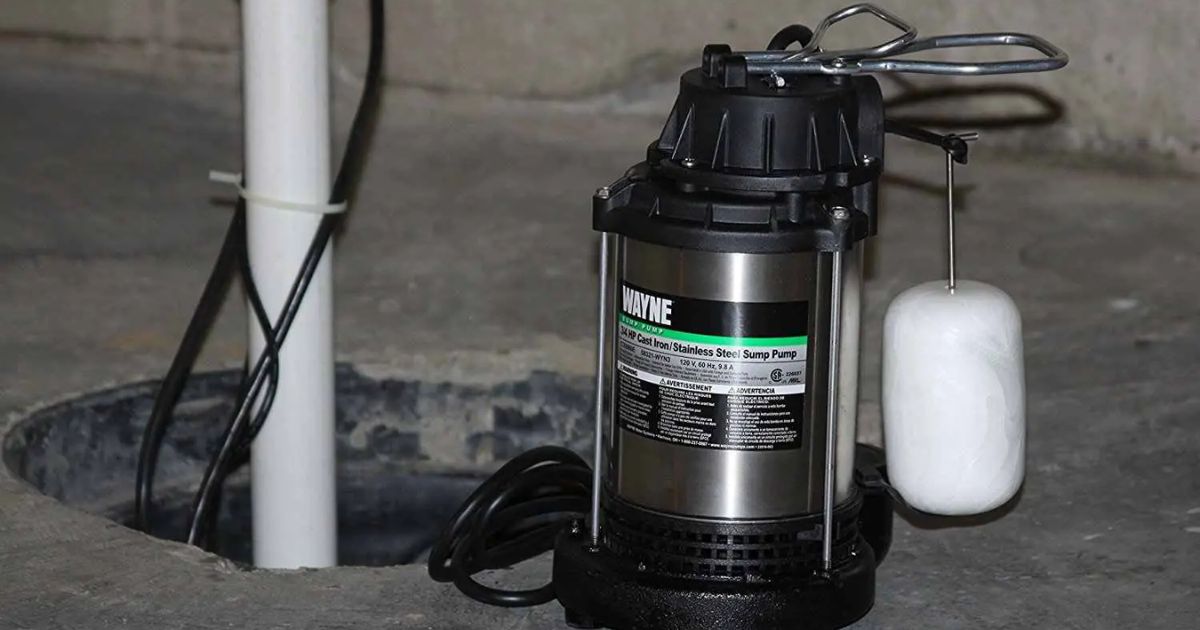
Submersible sump pump options provide a range of features and capabilities for efficient water removal. When selecting a submersible sump pump, it is important to consider factors such as horsepower, flow rate, head pressure, and the type of switch mechanism. To help you understand the different options available, here is a table outlining three common types of submersible sump pumps:
| Pump Type | Horsepower | Flow Rate (GPM) | Head Pressure (Feet) |
|---|---|---|---|
| 1/3 HP Pump | 1/3 HP | 40-60 | 10-15 |
| 1/2 HP Pump | 1/2 HP | 60-80 | 15-20 |
| 3/4 HP Pump | 3/4 HP | 80-100 | 20-25 |
These options vary in terms of power and capacity, allowing you to choose the pump that best suits your needs. In the next section, we will discuss the best sump pumps for different needs, taking into account factors such as basement size and water volume.
Best Sump Pumps for Different Needs
When considering the best sump pumps for various needs, it is essential to evaluate factors such as basement size, water volume, and the specific requirements of the property. Here are three top sump pumps that cater to different needs:
- Zoeller M53 Mighty-Mate Submersible Sump Pump: This pump is ideal for smaller basements and properties with a moderate water volume. It offers reliable performance and durability, making it perfect for residential use.
- Superior Pump 91250 Submersible Utility Pump: If you need a versatile sump pump that can handle both sump pit drainage and other water transfer tasks, this pump is a great choice. It is compact, lightweight, and can handle up to 30 gallons per minute.
- Wayne CDU980E Submersible Sump Pump: For larger basements or properties with high water volumes, this pump is a powerful option. It can handle up to 5490 gallons per hour and has a durable construction that ensures long-lasting performance.
How Sump Pumps Work and Why You Need One
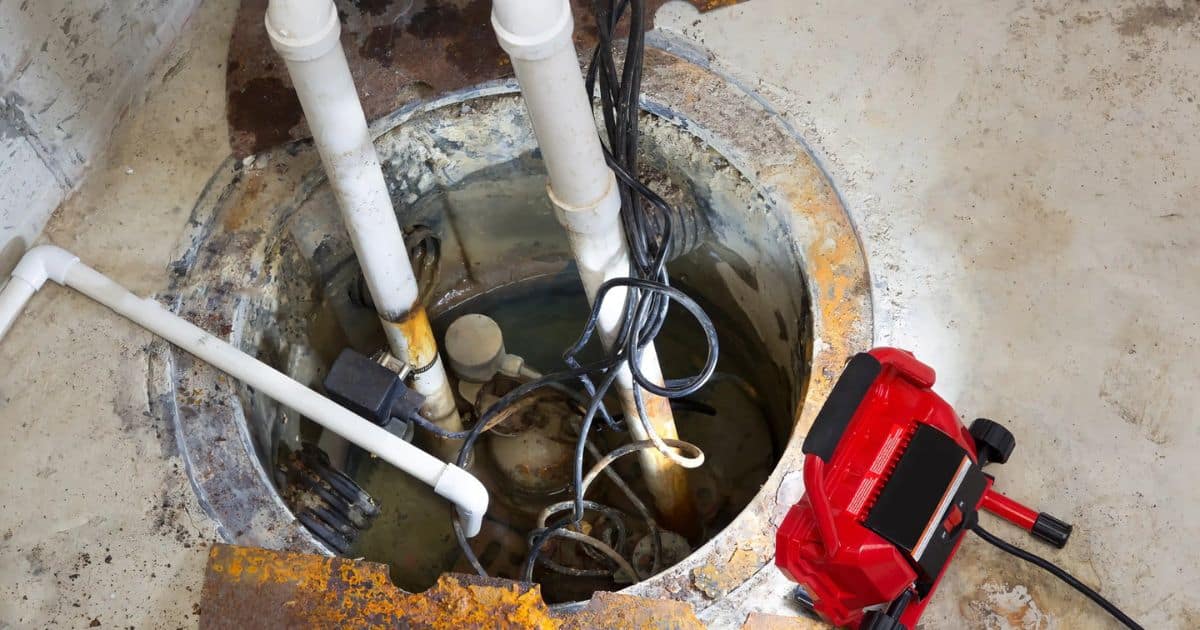
Sump pumps are essential devices for preventing water damage and maintaining a dry and safe environment in properties. They work by collecting excess water from the basement or crawl space and then pumping it out and away from the building. The main components of a sump pump system include a sump pit, a pump, and a discharge pipe.
The sump pit collects water that enters through drains or seepage, while the pump automatically activates when the water level reaches a certain point. Once activated, the pump pushes the water through the discharge pipe and away from the property.
Having a sump pump is crucial because it helps protect your property from flooding, water damage, and mold growth. It is especially important in areas prone to heavy rainfall, high water tables, or properties located in flood-prone zones. By removing excess water, sump pumps help prevent structural damage, basement flooding, and the growth of mold and mildew. They provide peace of mind and ensure a dry and healthy living environment.
In the next section, we will explore different types of sump pumps and their features to help you choose the right one for your needs.
Types of Sump Pumps and Their Features
Featuring various designs and capabilities, sump pumps come equipped with a range of features that cater to different needs and preferences. When choosing a sump pump, it’s important to understand the different types available and their specific features. Here are three types of sump pumps and their key features:
- Submersible Sump Pumps: These pumps are designed to be submerged underwater and are ideal for basements with limited space. They are quiet, efficient, and can handle high water volumes.
- Pedestal Sump Pumps: Unlike submersible pumps, pedestal pumps are installed above the sump pit. They are more affordable and easier to maintain, but can be noisier and less efficient.
- Battery Backup Sump Pumps: These pumps provide an extra layer of protection in case of power outages. They are typically used in areas prone to storms or where power failures are common.
Measuring Water Flow and Capacity
To accurately determine the water flow and capacity required for your sump pump, how can you measure it effectively? First, you need to calculate the volume of water that needs to be pumped out of the sump pit. To do this, you can measure the dimensions of the pit (length, width, and depth) and multiply them together. This will give you the volume in cubic feet. Next, you need to determine the time it takes for the sump pump to pump out this volume of water.
You can do this by timing how long it takes for the water level in the pit to decrease by a certain amount. By dividing the volume by the time, you can calculate the flow rate in cubic feet per minute. This information will help you choose a sump pump with the appropriate capacity to handle the water flow. Now, let’s discuss considerations for vertical lift and distance.
Considerations for Vertical Lift and Distance
When selecting a sump pump, it is important to consider the vertical lift and distance involved in pumping the water. This is crucial in determining the power and capacity of the sump pump needed for your specific situation. Here are three key considerations to keep in mind:
- Vertical Lift: This refers to the height the water needs to be lifted from the sump pit to its final destination, such as a drainage system or outside the building. The higher the lift, the more power the sump pump needs to effectively move the water against gravity.
- Horizontal Distance: Consider the distance the water needs to travel horizontally from the sump pump to its discharge point. Longer distances may require a more powerful pump to maintain sufficient water flow.
- Pipe Diameter: The diameter of the discharge pipe can also affect the pump’s performance. Larger diameter pipes allow for greater water flow, reducing the strain on the pump.
Consulting Professionals for Sump Pump Selection
For expert guidance on selecting the appropriate sump pump, it is advisable to consult with professionals in the field. Sump pump professionals have the knowledge and experience to assess your specific needs and recommend the most suitable pump for your situation. They can consider factors such as the size of your basement, the amount of water infiltration, and any specific challenges or requirements you may have.
By consulting with professionals, you can ensure that you choose a sump pump that will effectively protect your property from water damage and meet your expectations in terms of performance and reliability. Additionally, professionals can provide valuable information on maintenance and troubleshooting, helping you make the most of your sump pump investment.
Tips for Choosing the Right Sump Pump Size
When selecting the right sump pump size, it is important to consider the specific needs and requirements of your basement. Here are three tips to help you choose the right size:
- Calculate the volume of water: Determine how much water your basement is likely to collect during a heavy rainstorm or flooding event. This will give you an idea of the pump’s capacity requirements.
- Consider the pump’s horsepower: The horsepower of a sump pump determines its ability to move water. A higher horsepower pump is generally more powerful and can handle larger volumes of water.
- Factor in the pump’s discharge rate: The discharge rate is the amount of water the pump can remove per minute. It is important to choose a pump with a discharge rate that matches the amount of water your basement is likely to collect.
FAQ’s
Can I Use a Sump Pump for Other Purposes Besides Removing Water From a Basement?
Sump pumps are primarily designed for removing water from basements. However, they can be repurposed for other applications, such as draining pools or excavations. It is important to ensure that the pump meets the specific requirements of the intended use.
What Maintenance Is Required for a Sump Pump?
Regular maintenance is crucial for the proper functioning of a sump pump. This includes inspecting and cleaning the pump, checking the float switch, testing the backup power source, and ensuring the discharge pipe is clear of debris.
Can a Sump Pump Be Installed Outside of the House?
Yes, a sump pump can be installed outside of the house. It is important to choose a pump that is specifically designed for outdoor use and to follow the manufacturer’s instructions for installation and maintenance.
Are There Any Safety Precautions I Should Take When Using a Sump Pump?
When using a sump pump, it is important to take certain safety precautions to ensure proper operation and prevent accidents. These may include regularly inspecting and maintaining the pump, using a ground fault circuit interrupter (GFCI), and keeping the area around the pump clean and free from debris.
What Is the Average Lifespan of a Sump Pump?
The average lifespan of a sump pump depends on various factors such as usage, maintenance, and quality. It is generally recommended to replace a sump pump every 7-10 years to ensure optimal performance and prevent potential failures.
Conclusion
In conclusion, selecting the right sump pump size is crucial for effective water removal and preventing basement flooding. Factors such as water flow, capacity, vertical lift, and distance should be considered when choosing the appropriate horsepower for your sump pump. Consulting professionals can provide valuable guidance in selecting the best sump pump for your needs. Remember, having a properly sized sump pump is essential for maintaining a dry and safe basement environment.
